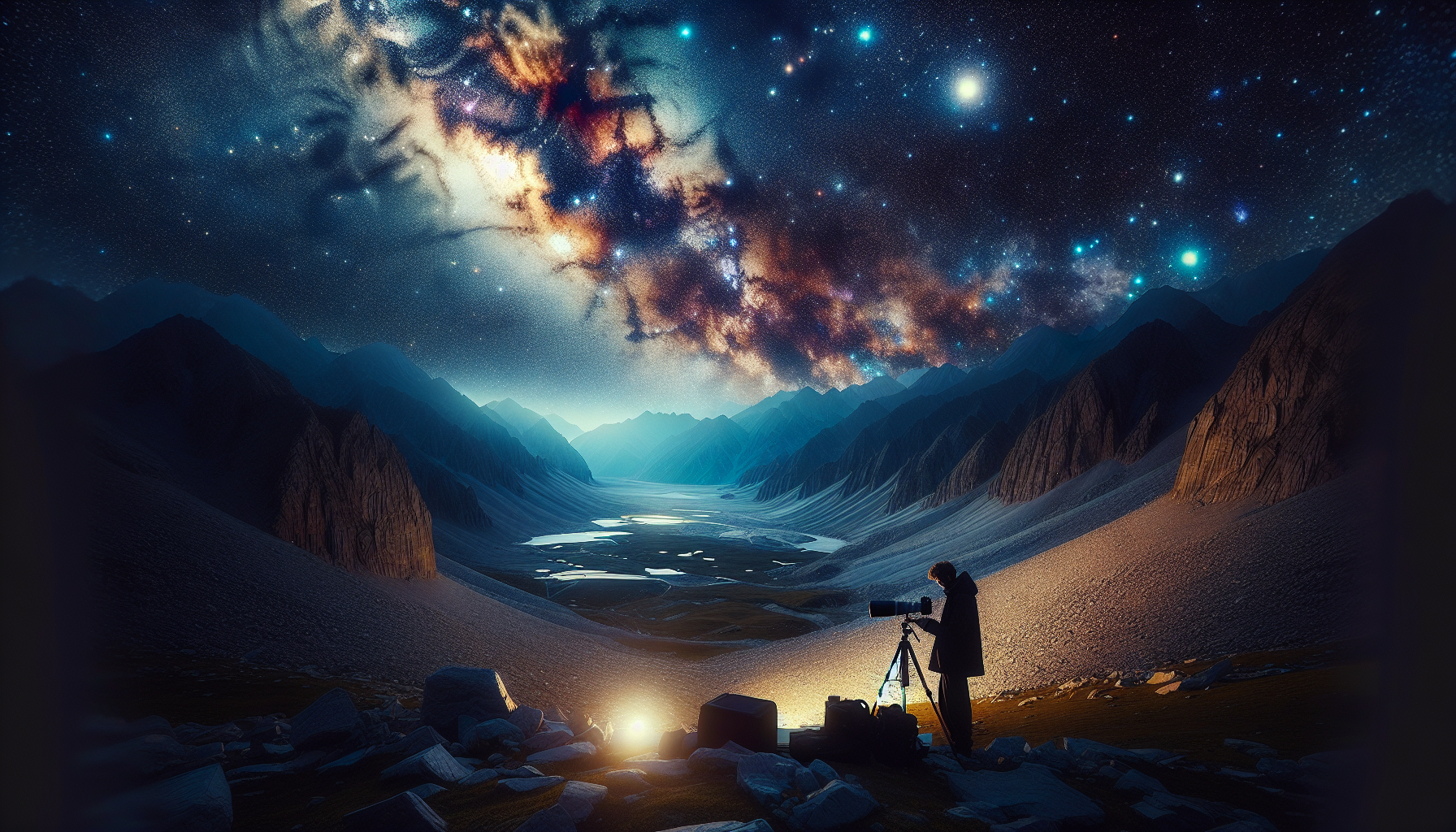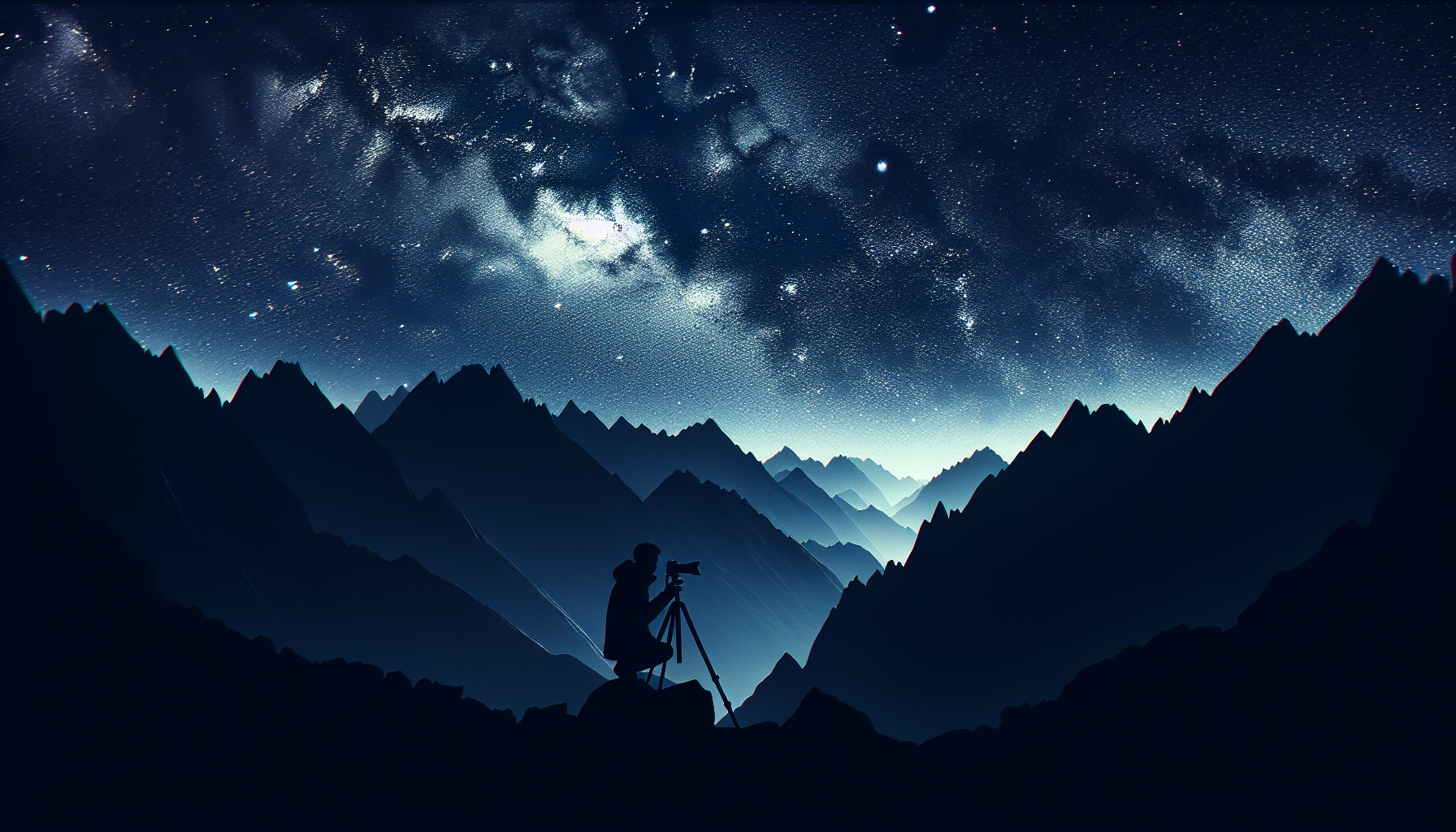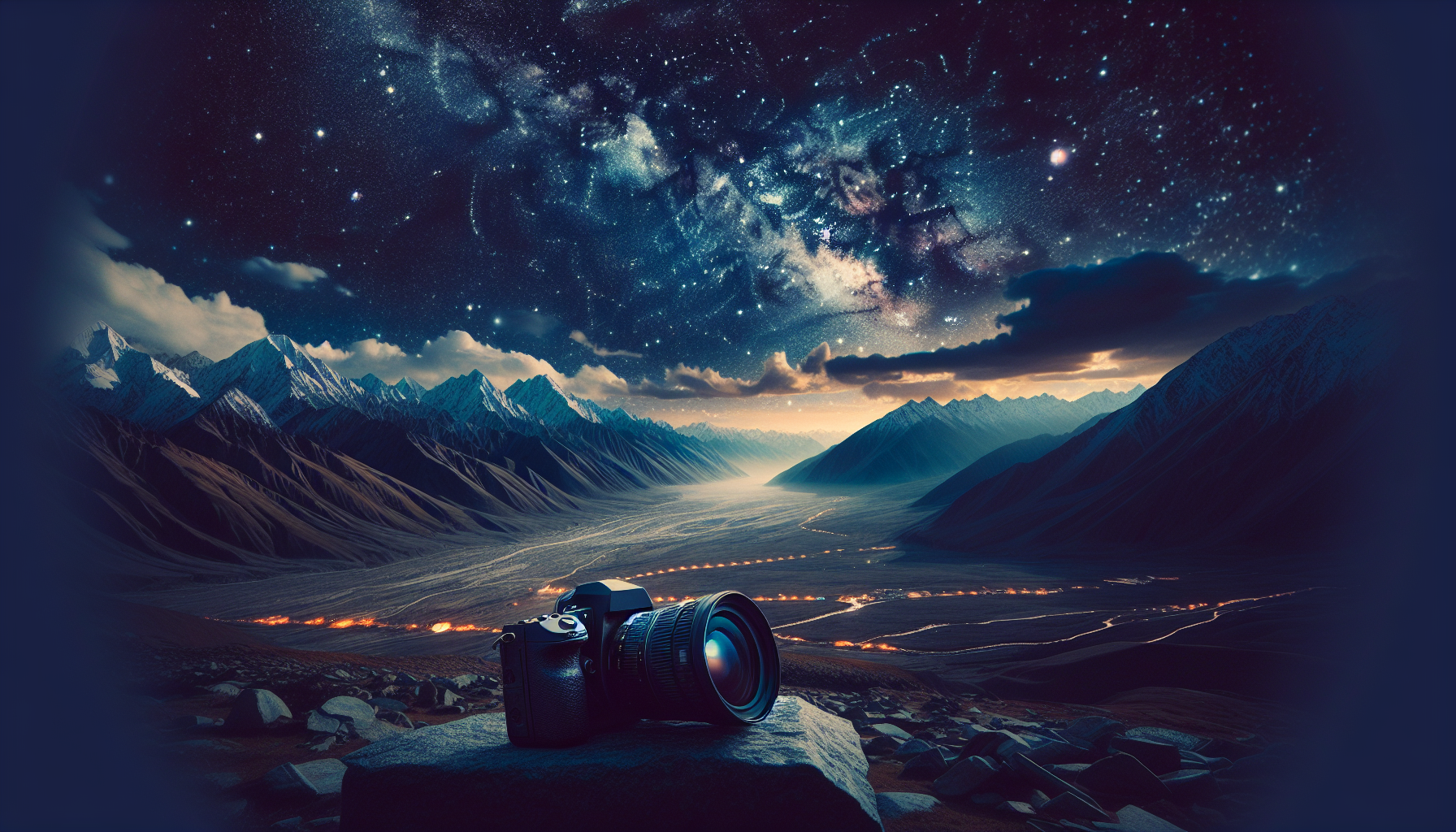As an avid stargazer, I can confidently say that “Astrophotography in Pakistan 2025: The Ultimate Guide to Capturing the Night Sky” is an exciting opportunity for enthusiasts. With technological advances and increased awareness, 2025 promises to be a landmark year. The Pakistan Meteorological Department predicts clearer skies, especially in remote areas like Skardu and Gwadar. My last trip to the Karakoram Range was breathtaking, with the Milky Way shining brightly above. Moreover, initiatives by local groups like the Space and Upper Atmosphere Research Commission are fostering a growing community of sky watchers. This year, make sure your gear is ready and your eyes are set on the stars.
Astrophotography in Pakistan 2025: The Ultimate Guide to Capturing the Night Sky
Exploring the cosmos from Pakistan is an experience like no other. With its diverse landscapes and clear skies, our beautiful country offers countless opportunities for capturing the night sky. As an avid astrophotographer, I’ve spent countless nights under the stars across Pakistan, from the rugged terrains of Balochistan to the serene valleys of Hunza.
Top Spots for Stargazing in Pakistan
Pakistan’s diverse geography provides many unique locations for night photography. Here are a few of my favorites:
- Skardu: Nestled in the heart of Gilgit-Baltistan, Skardu offers pristine skies away from city lights.
- Ranikot Fort: Known as the Great Wall of Sindh, this spot is perfect for combining historical architecture with star trails.
- Fairy Meadows: Situated near Nanga Parbat, the open skies here are a dream for capturing the Milky Way.
Essential Gear for Night Photography
Investing in the right gear is crucial for stunning astrophotography. Consider using a camera with a large sensor and fast lens to capture more light. A sturdy tripod is a must for long exposures. Additionally, a star-tracking mount can enhance your shots by reducing star trails.
For the best results, keep an eye on local weather forecasts through the Pakistan Meteorological Department. This ensures clear skies for your adventures. Joining local communities like Lahore Astronomical Society can also provide valuable tips and camaraderie.
Remember, patience and practice are key. Each trip under the stars brings new challenges and rewards. Enjoy the journey!
Best Locations for Astrophotography in Pakistan 2025

Astrophotography in Pakistan is an incredible experience, offering some of the clearest night skies in the world. As a passionate photographer based in Karachi, I’ve had the pleasure of exploring many breathtaking spots across the country. Each location offers its own unique charm, making the journey just as exciting as the destination.
Top Spots for Night Sky Photography
In 2025, Pakistan offers several prime locations for capturing the night sky’s beauty. Here are a few of my personal favorites:
- Fairy Meadows: Nestled at the base of Nanga Parbat, Fairy Meadows is a dream for photographers. The panoramic view of the Milky Way against the towering peaks is truly magical.
- Deosai National Park: Known as the “Land of Giants,” this park offers vast open skies perfect for stargazing. The high-altitude plateau minimizes light pollution, providing crystal-clear views.
- Ranikot Fort: This historical site in Sindh offers a combination of cultural richness and celestial beauty. The fort’s walls create a dramatic foreground against the starry expanse.
Tips for Capturing the Cosmic Wonder
When shooting the night sky, proper gear and techniques are essential. A sturdy tripod is a must-have to keep your camera steady, especially during long exposures. I always recommend checking the weather forecast using Pakistan Meteorological Department for optimal conditions. Additionally, joining local photography groups like Lahore Astronomical Society can enrich your experience with valuable insights and community support.
A report by Dawn highlighted the growing interest in astrophotography among the youth in Pakistan. This surge in interest is unsurprising given the stunning vistas our country offers.
Embarking on this journey of night sky photography in Pakistan is not just about capturing images. It’s about creating memories and experiencing the profound beauty of our universe firsthand. Whether you are a seasoned pro or a curious newcomer, the skies of Pakistan are ready to inspire.
Essential Gear for Capturing the Night Sky in Pakistan

When venturing into the mesmerizing world of astrophotography in Pakistan, having the right gear is essential. The night skies over the northern areas like Skardu and Hunza are breathtaking, and with the correct equipment, you’ll capture stunning images every time.
Top Equipment for Night Sky Photography
First and foremost, invest in a good quality DSLR camera. Models like the Canon EOS series or Nikon D series are popular among enthusiasts. They offer excellent low-light capabilities, crucial for capturing vibrant stars and celestial events. I remember my first trip to Fairy Meadows; my Canon EOS beautifully captured the Milky Way arching over Nanga Parbat.
Accessories to Enhance Your Experience
A solid tripod is non-negotiable. The mountainous terrain can be challenging, so look for a lightweight yet sturdy model. Manfrotto or Gitzo brands are reliable options. During a chilly night in Deosai, my Manfrotto tripod kept my camera steady despite the strong winds.
Next, consider a remote shutter release. This tool helps prevent camera shake. A basic intervalometer works wonders for long-exposure shots. During a meteor shower viewing session in Khunjerab, I managed to capture multiple shooting stars using my intervalometer.
Finally, don’t forget your lenses. A wide-angle lens with a large aperture is perfect for night sky photography. The Sigma 14mm f/1.8 is a favorite among local photographers. For more tips and advice, check out resources from the Pakistan Science Foundation and stay updated with weather forecasts from the Pakistan Meteorological Department.
Equipped with the right gear, you’ll be ready to document the awe-inspiring celestial displays across Pakistan’s pristine landscapes. Happy shooting!
Astrophotography in Pakistan 2025: Tips and Techniques for Stunning Photos

When it comes to capturing the night sky in Pakistan, a few tried-and-true tips can elevate your astrophotography game. Having wandered through the starry landscapes from Skardu to Gwadar, I’ve learned that the right approach can turn a good photo into a breathtaking one.
Master the Art of Night Sky Photography
The first step is to choose a location with minimal light pollution. Northern areas like Hunza and Swat offer some of the darkest skies. A trip to these regions is not just a photography session; it’s a spiritual experience. Make sure to check light pollution maps, available on sites like Pakistan Meteorological Department, to find the best spots.
Equipment matters, but understanding your gear is even more crucial. A sturdy tripod and a camera capable of long exposures are essential. I swear by the local Pakistan Space and Upper Atmosphere Research Commission for updates on celestial events, which can add that extra wow factor to your photos.
Techniques for Capturing the Stars
Patience and practice are key. Experiment with different ISO settings and shutter speeds. I usually start with an ISO of 1600 and a shutter speed of 20 seconds. Don’t forget to manually focus on the stars. This ensures sharp images. Apps like PhotoPills can help you plan your shots by showing the path of the Milky Way.
- Use a wide-angle lens for capturing more of the sky.
- Include foreground elements to add depth to your images.
- Consider stacking multiple images to reduce noise.
Finally, post-processing is where the magic happens. Learning tools like Adobe Lightroom can turn your raw images into masterpieces. For local editing tips, I recommend workshops by the National College of Arts. Happy shooting, and may your skies always be clear!
Understanding Night Sky Patterns in Pakistan
As an avid astrophotographer based in Pakistan, understanding the night sky is crucial for capturing its beauty. Our country offers stunning views that are perfect for both amateur and seasoned photographers. The journey of mastering these patterns will elevate your skills and make your photos stand out in any guide on capturing the night sky.
Mapping the Celestial Highlights
Pakistan’s diverse landscapes provide unique vantage points for observing the night sky. The towering peaks of the Karakoram and the barren expanses of Balochistan are favorites. These areas have minimal light pollution, offering clear views of celestial wonders. In my experience, the serene valleys of Skardu and Hunza offer some of the most breathtaking sights.
To enhance your astrophotography, familiarize yourself with the seasonal constellations visible in our skies. Winter brings Orion and its stunning nebulae, while summer showcases the mighty Scorpius. Each season offers a unique set of stars and constellations to capture.
Tips for Spotting Patterns
Investing in a star chart or a reliable app can be invaluable. Tools like Pakistan Astronomical Society provide excellent resources for beginners and experts alike. Additionally, attending local stargazing events organized by SUPARCO can deepen your understanding of celestial movements.
- Plan your shoots around new moons for optimal darkness.
- Use a compass to align your equipment with the North Star.
- Keep track of meteor shower dates for stunning shots.
Remember, patience is key. The more time you spend observing, the better you’ll become at predicting and photographing these night sky patterns. Embrace the process and enjoy the adventure under the stars!
Conclusion
As we wrap up this journey into the world of astrophotography in Pakistan, it’s clear that our country offers some of the most breathtaking opportunities for capturing the night sky. Whether you’re perched on the serene hills of Skardu or exploring the deserts of Thar, each location provides a unique canvas for your astrophotography pursuits.
Capturing the Celestial Beauty
One of my most memorable experiences was a crisp, clear night in Hunza. The sky was a tapestry of stars, and I found myself in awe of the sheer magnitude of the universe. It was then that I realized how essential it is to have the right gear. A reliable camera and a sturdy tripod can make all the difference. I often recommend using tools like Pakistan Meteorological Department to check weather conditions before heading out.
Essential Tips for the Aspiring Astrophotographer
- Plan your shoot by checking the moon phases and visibility.
- Invest in a good-quality lens that can capture low-light scenarios effectively.
- Join local astrophotography groups or forums for community support and tips. Pakistan Astronomy and Astrophysics Network is a great place to start.
In conclusion, the ultimate guide to capturing the night sky in Pakistan is all about preparation and passion. Our country, with its diverse landscapes, provides an ideal backdrop for astrophotography. Remember, patience is key. With dedication and the right approach, you’ll be able to capture stunning images that showcase the celestial wonders above us. Keep exploring, and let the night sky be your guide!
Frequently Asked Questions
What are the best locations for astrophotography in Pakistan in 2025?
In 2025, some of the best locations for astrophotography in Pakistan include the dark skies of Skardu, the serene valleys of Hunza, and the remote areas of Balochistan. These regions offer minimal light pollution and clear skies, providing perfect conditions for capturing stunning images of the night sky.
What tips can help beginners improve their astrophotography skills in Pakistan?
Beginners can improve their astrophotography skills by using a sturdy tripod, setting their camera to a high ISO, and experimenting with long exposure times. Additionally, planning shoots around new moon phases and using apps to track celestial events can significantly enhance the quality of astrophotography in Pakistan.
What is the recommended gear for astrophotography in Pakistan in 2025?
For astrophotography in Pakistan in 2025, it’s recommended to use a DSLR or mirrorless camera with a wide-angle lens, a sturdy tripod, and a remote shutter release. Investing in star-tracking mounts and using light pollution filters can also help capture clearer and more detailed images of the night sky.


Leave a Reply